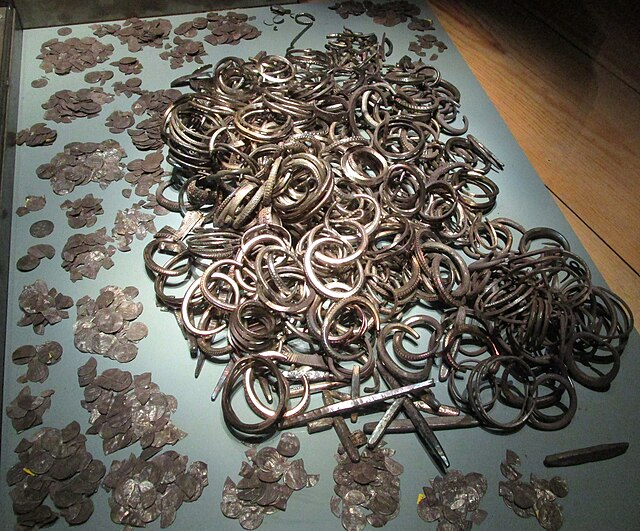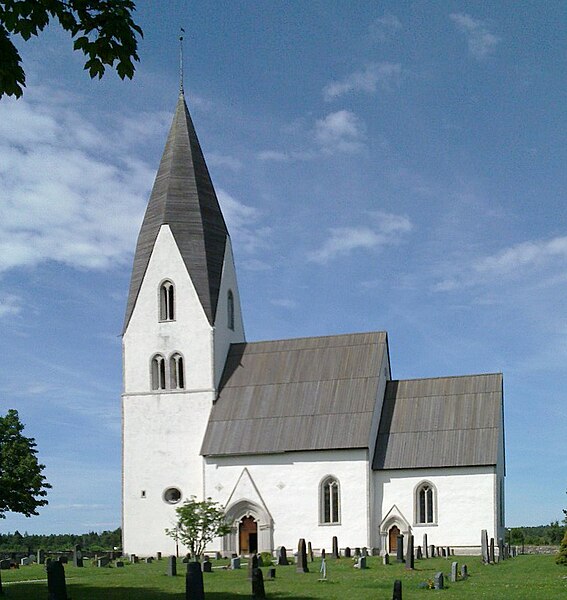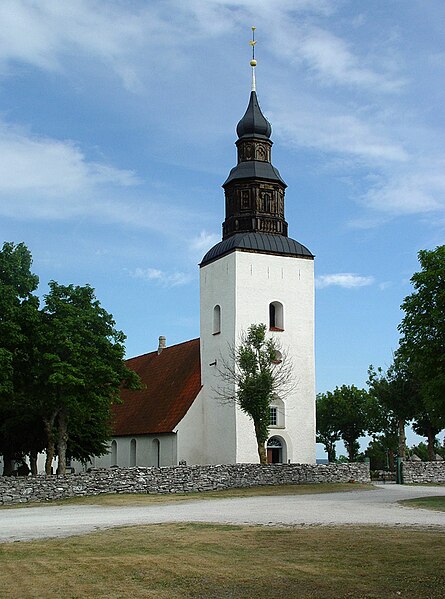Gotland, also historically spelled Gottland or Gothland, is Sweden's largest island. It is also a province/county, municipality, and diocese. The province includes the islands of Fårö and Gotska Sandön to the north, as well as the Karlsö Islands to the west. The population is 61,001, of which about 23,600 live in Visby, the main town. Outside Visby, there are minor settlements and a mainly rural population. The island of Gotland and the other areas of the province of Gotland make up less than one percent of Sweden's total land area. The county formed by the archipelago is the second smallest by area and is the least populated in Sweden. In spite of the small size due to its narrow width, the driving distance between the furthermost points of the populated islands is about 170 kilometres (110 mi).
Torsätra runestone (U 614) raised in memory of one of the Swedish king's tribute collectors who fell ill and died during a trip to Gotland. Swedish History Museum, Stockholm.
A part of the Spillings Hoard at Gotland Museum
Tofta Church, one of the island's many distinctive, well-preserved medieval churches.
Rauks at Langhammars, Fårö
Fårö or Fåre in Gutnish is a Baltic Sea island just north of the island of Gotland, itself off mainland Sweden's southeastern coast. It is the second-largest island in the county and it is a popular summer resort. It has its own language, Faroymal, a dialect of Gutnish.
Rauks at Langhammars, Fårö
Fårö Church
Fårö Fyr
Sudersand







